History and Heritage
Ancient Egypt
Culture Exploration
Destinations
Egypt
Mythology and Folklore
Travel Guides
The Karnak Temple: A Journey into History Filled with Intriguing Facts!

Updated On: February 19, 2024 by ConnollyCove
Welcome to a place that is truly like no other – the awe-inspiring Karnak Temple in Egypt. Spread out over a hundred acres, it is one of the greatest religious complexes in the world. This temple is an open book to the great civilisation of ancient Egypt.
Karnak Temple, located near Luxor in Egypt, stands majestically on the Nile River east bank of the Nile River. While it’s open year-round, the best time to visit is during Egypt’s cooler months, from October to April.
Visiting early morning or late afternoon allows you to avoid the heat and enjoy the site in a more pleasant climate. Regardless of when you visit, Karnak’s sheer size and grandeur promise an unforgettable experience.
Let’s share some intriguing facts about this marvellous monument that will enrich your visit and make it a memorable one.
The Grandeur of Construction
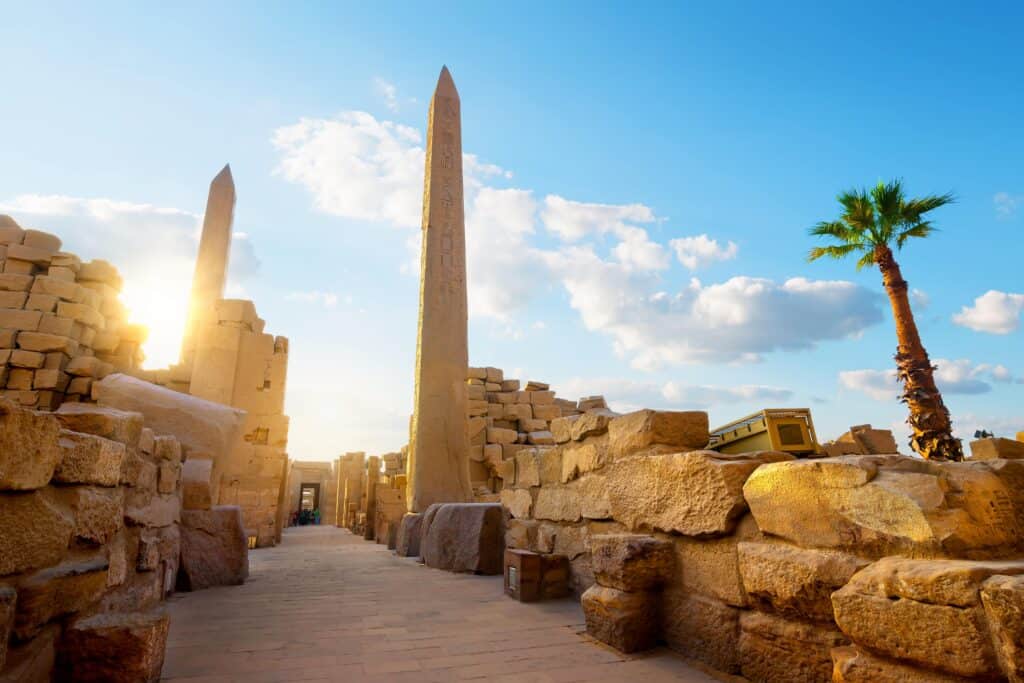
Karnak is more than a single temple; it’s a vast array of sanctuaries, kiosks, pylons, and obelisks, all devoted to the Theban gods and the monumental legacy of Egypt’s pharaohs.
The construction spanned over 1,500 years, with each pharaoh adding their touch. So, when you walk through, you’re not just exploring a place but moving through the ages of ancient Egyptian history.
Architectural Grandeur of Karnak Temple
Karnak Temple, a masterpiece of ancient Egyptian architecture, is a vast complex divided into four main parts, but only the largest—the Precinct of Amun-Re—is accessible to tourists. Upon entering, you’ll first encounter the Avenue of Sphinxes, a grand pathway adorned with numerous sphinx statues. This leads you to the temple’s main gateway or the first pylon, a monumental wall that once acted as the ceremonial entrance.
Beyond the first pylon, the awe-inspiring Hypostyle Hall awaits. This vast space is a forest of 134 colossal columns arranged in 16 rows, providing an astonishing spectacle of ancient architectural craftsmanship. The central nave’s 12 columns, taller than the others, allowed for clerestory windows to let in sunlight.
Further inside, you’ll discover several smaller temples, chapels, and other structures dedicated to various gods and pharaohs. Key features include the Obelisk of Hatshepsut, standing at a staggering height of 29.5m, the Sacred Lake, where ceremonial ablutions took place, and the Festival Hall of Thutmose III, often referred to as the most ancient ‘historical record.’
Each corner of Karnak is rich with detailed bas-reliefs, hieroglyphic inscriptions, and statues depicting gods, pharaohs, and intricate mythological scenes, offering a visual feast for visitors. This architectural marvel is not just a temple but a magnificent testament to the grandeur of ancient Egypt.
The Avenue of Sphinxes: A Majestic Pathway
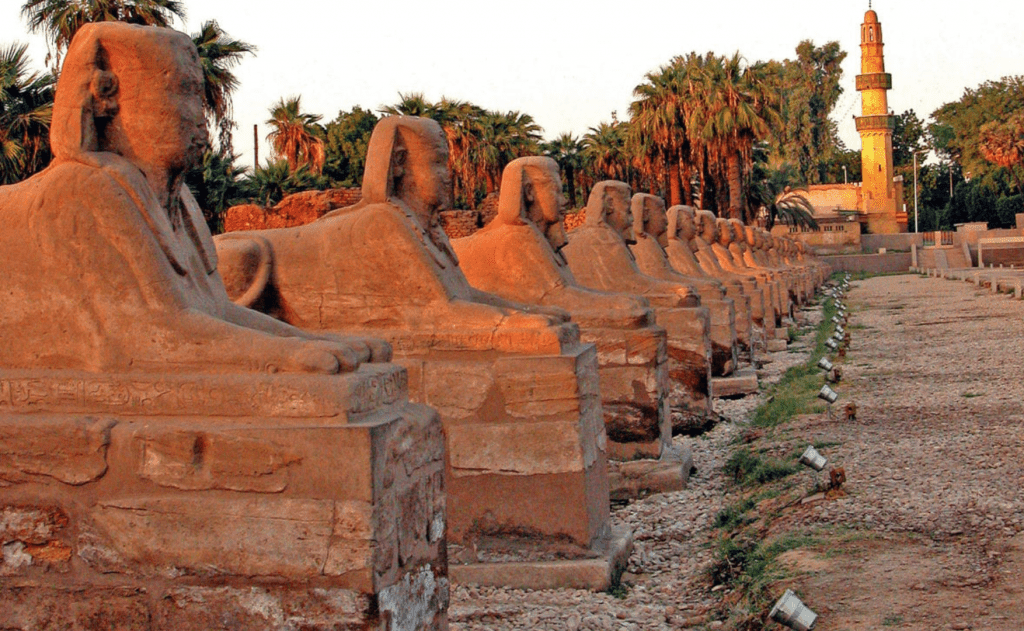
As you approach the temple, you’ll walk the Avenue of Sphinxes, a magnificent pathway once lined with hundreds of sphinx statues. These mythical creatures with a lion’s body and a man’s head were believed to possess great strength and wisdom, a fitting entrance to the sacred Karnak.
The lion’s body signifies great strength, while the human head symbolises intelligence and wisdom. These sphinxes were not just decorative elements but embodiments of protection and wisdom, aptly representing the pharaohs’ might and enlightenment, who were considered incarnations of the god Horus in life and Osiris in death.
Interestingly, each sphinx along the avenue held a small statue of the pharaoh between their paws, symbolising their protection from the king. Furthermore, the avenue wasn’t merely a walkway but a site of grand processions during important religious festivals, especially the Beautiful Festival of the Valley, linking Karnak with the Luxor Temple.
Over time, many of these sphinxes disappeared, buried under the sands of time, or repurposed in other constructions. However, recent restoration work has revived the avenue’s grandeur. Completed in 2011, this project unearthed buried sphinxes and reestablished the connection between the Karnak and Luxor Temples, allowing you to walk the same path that ancient Egyptians did thousands of years ago.
On November 25, 2021, Egypt’s President Abdel Fattah El Sisi inaugurated the restored Avenue of Sphinxes in a grand ceremony. The event was attended by high-ranking officials, international dignitaries, and ambassadors, symbolising Egypt’s commitment to preserving and showcasing its rich historical heritage.
So, as you walk along the Avenue of Sphinxes, you’re not just entering a temple complex; you’re stepping into a historical journey that spans millennia, full of stories of faith, power, and architectural genius. It’s an experience that will transport you back in time, making you a part of Karnak’s rich, vibrant history.
The Hypostyle Hall: Forest of Pillars
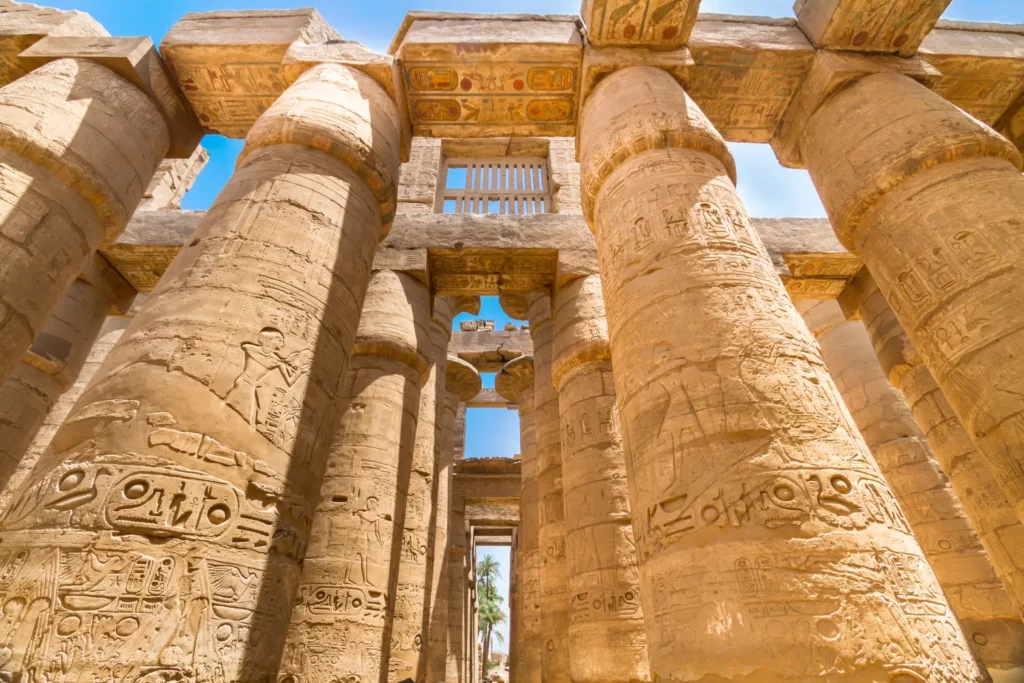
Once inside, get ready to be amazed by the Great Hypostyle Hall, a veritable forest of giant pillars. It covers an area of 5,000 m2 and includes 134 columns that reach up to 22 metres in height.
Just imagine, some of them are so large that it would take more than a dozen people to reach around them with outstretched arms! This architectural marvel is a testament to the extraordinary skills of ancient Egyptian builders.
Sacred Lake: A Divine Connection
As we continue our journey through the vast Karnak complex, we encounter the Sacred Lake, an integral part of the temple’s spiritual life.
This large rectangular pool, measuring about 130 by 77 metres, was used by the priests for ritual ablutions. Each morning, they would cleanse themselves in these sacred waters before performing their daily ritual duties, adhering to the strict purity rules of their sacred office.
The lake was also used for nocturnal rites under the shimmering stars, the gleaming surface of the water reflecting the celestial bodies, linking the earth and the heavens in a symbolic union.
Archaeologists have found model boats at the site, likely used in these rituals to transport the image of the god across the water, simulating celestial journeys.
Moreover, the Sacred Lake is steeped in legends, especially associated with the divine birth of the god Amun, a vital figure in the Karnak Temple. It’s said that Amun’s mother, a priestess of the temple, bathed in this lake, where the god Khnum – the divine potter – fashioned Amun’s body.
As you stand by its tranquil edge, it’s a humbling experience to reflect on the deep spiritual history of this place. The waters may appear merely a lake, but to the ancient Egyptians, they were a conduit to the divine, an integral part of their connection with their gods.
The Sound and Light Show: A Spectacular Night-time Journey
Don’t miss the Sound and Light show, a unique spectacle that takes you on a journey back in time. As the sun sets, the temple is lit up with a dramatic play of lights and shadows while a powerful narration echoes around the walls, recounting stories of pharaohs and gods.
The show begins at around 7 PM, lasting approximately 75 minutes. A powerful narration echoes around the temple walls, recounting captivating stories of pharaohs, gods, and the people who built this architectural marvel.
The narratives are available in multiple languages, including English, French, Spanish, German, Italian, and Arabic, ensuring a broad understanding for international visitors.
This magical experience lets you see the temple in an entirely different, enchanting light. Tickets for this unforgettable show typically range from 100 to 150 Egyptian pounds, a small price to pay for a night of wonder that’ll etch Karnak into your memory in a truly unique way.
The Deciphering of Hieroglyphics: Karnak Temple’s Role in Unravelling History
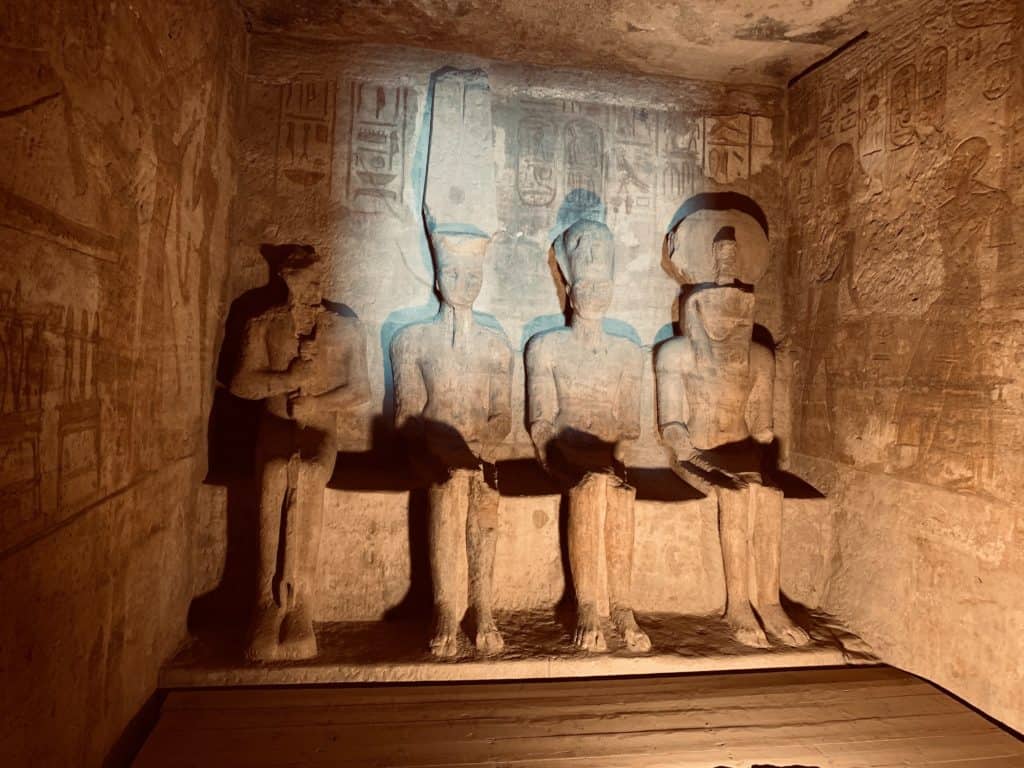
One of the mind-blowing aspects of the Karnak Temple is its crucial role in deciphering Egyptian hieroglyphics. These elaborate pictorial characters were a mystery to the modern world for centuries until the Rosetta Stone offered a key to unlock their meaning.
The “Festival Hall of Thutmose III”, a significant part of the Karnak complex, was instrumental in this process. This hall is known for its extensive inscriptions, which include lists of foreign countries that the pharaoh claimed to have conquered.
When scholars compared these lists with similar ones in Greek on the Rosetta Stone, they found vital clues that aided in decoding the hieroglyphics.
These intricate inscriptions, which once adorned the walls of Egyptian temples and tombs, are more than just beautiful art; they’re an ancient form of communication, telling tales of victories, divine rituals, and everyday life.
As you stand before the ancient hieroglyphs at Karnak, you are gazing at a language that was once lost to time, only to be revived by the persistent efforts of dedicated scholars. It’s a tangible connection to the ancients, a silent dialogue spanning millennia, and a poignant reminder of humanity’s relentless pursuit of understanding.
Rediscovery and Restoration of Karnak Temple
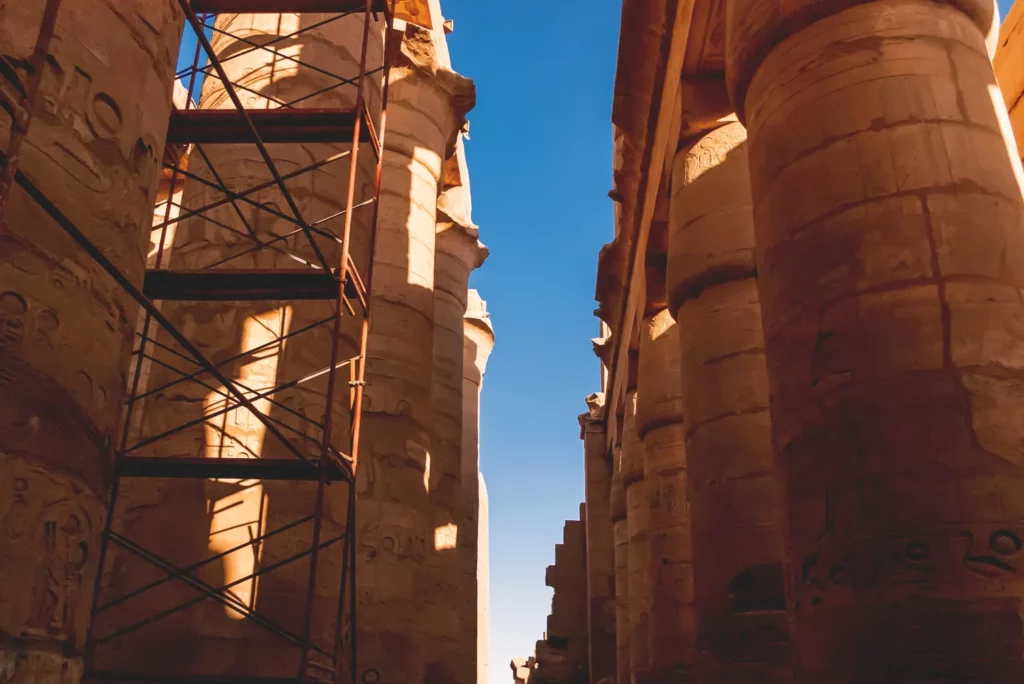
The Karnak Temple, despite its colossal size, was gradually swallowed by the desert and local settlements over time. Its rediscovery started in the early 19th century, largely thanks to the efforts of Jean-François Champollion, the famed decipherer of the Rosetta Stone, and his fellow explorers.
These pioneers recorded, sketched, and began initial excavations, bringing Karnak back into the world’s eyes. Since then, the temple has undergone extensive archaeological exploration and restoration.
The Egyptian government, in cooperation with international teams, including the Franco-Egyptian Centre, has been continuously working to preserve this iconic monument. This involves not only excavations but also structural stabilisation, stone conservation, and even the reconstruction of collapsed elements.
Accommodation and Cruises in Luxor: Options for Every Budget
Luxor, home to the Karnak Temple, offers various accommodation options to suit all budgets. For the luxury seeker, the Sofitel Winter Palace presents elegant rooms with a taste of history, starting at around $200 per night. Its lush gardens and Nile views are unmatched.
The mid-range Steigenberger Nile Palace, with rooms from $80, offers comfortable lodgings and excellent service. Budget travellers can consider the Nefertiti Hotel, a gem with rooms starting at $25, offering a rooftop view overlooking the Luxor Temple.
Luxor is also the starting point for several Nile cruises. For a luxurious journey, the Oberoi Philae offers a 4-night itinerary from Luxor to Aswan, with prices starting from $1500, including meals and sightseeing. For budget travellers, M/S Nile Goddess offers a similar itinerary at a more affordable rate starting from $400.
These cruises offer an enchanting perspective of Egypt, floating past age-old temples, lush riverbanks, and traditional villages, making your Karnak visit part of an unforgettable journey through time.

Luxor Old Souk: A Shopping Experience Not to Be Missed
No visit to Luxor would be complete without a trip to the bustling Luxor Old Souk. Nestled right in the heart of Luxor, this vibrant market is a feast for the senses, with the enticing aroma of spices, the colourful display of fabrics, and the lively chatter of vendors and shoppers alike.
At the souk, you’ll find everything from handcrafted jewellery and traditional Egyptian clothing to intricate papyrus paintings and delicate glass perfume bottles. Some of the best souvenirs include alabaster statues, scarab beetles, which are symbols of good luck, and, of course, the quintessential Egyptian cartouche jewellery.

While exploring, remember to haggle – it’s part of the fun and local tradition. Start by offering half the asking price and then negotiate from there. Also, make sure to roam around before making a purchase to get the best price.
The best bazaars in the souk are often those tucked away in the smaller lanes. These hidden gems offer an authentic experience away from the main touristy areas. Immerse yourself in the vibrant shopping culture of Luxor, which is not just about the purchases, but the experience itself!
A Journey into History
So, there you have it, friends – a glimpse into the intriguing world of the Karnak Temple. As you explore its ancient stones, remember the centuries of devotion, ambition, and skill that went into creating this wonder.
From the grand Avenue of Sphinxes to the towering Hypostyle Hall, from the tranquil Sacred Lake to the vibrant Sound and Light show, every part of Karnak has a story to tell. Enjoy your visit, and let the spirit of ancient Egypt enchant you.







Aw, this was a very nice post. In concept I want to put in writing like this moreover – taking time and actual effort to make an excellent article… but what can I say… I procrastinate alot and not at all seem to get something done.
Fabulous information
Thank you for the kind feedback.
So glad you enjoyed our blog on the Karnak Temple 🙂